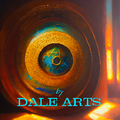|
ABOUT US |
Dale Arts is a gallery of collections of fine art images created to beautify your decor whether at home or office or graphic design shop. Some of the art is from redesigned photography, some are reprints of paintings created by Dale Arts, All photographic art is done by Tom Dale, a fine art photographer for over 20 years who has won many awards at art shows throughout Ontario, Canada.
We are also a design and reproduction service for persons wishing to have their photographs designed into art from realistic to watercolour, abstract, oil painting formats. For this service the photograph must be greater than 1 MB in size. Images taken by a cell phone are too small but an iPad photo is a great size to work with. See the Services section of our website .
Tom lives in Waterloo, Ontario, Canada and has travelled the world to gather images that he turns into art



 What defines fine-art photography?
What defines fine-art photography?


